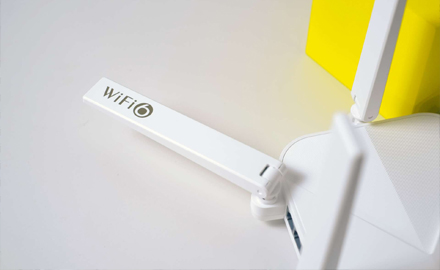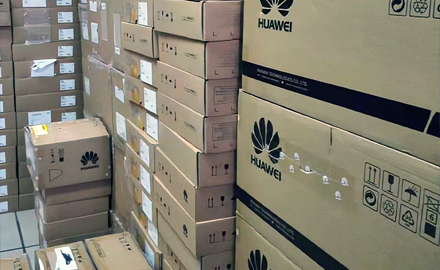At present, the high-bandwidth access networking method is mainly PON-based FTTX access. The main aspects and assumptions involved in cost analysis are as follows:
●Access section equipment costs (including various access equipment and lines, etc., averaged to each line user)
●Project construction costs (including construction fees and other overhead costs, generally 30% of the total equipment price)
●Operation and maintenance costs (generally about 8% of the total cost per year)
●The installation rate is not considered (that is, the installation rate is 100%)
●The required equipment costs are calculated based on the 500 user model
Note 1: FTTX access does not consider the cost of the community computer room;
Note 2: When the access distance of ADSL2+ is 3km, it has no advantage compared with ADSL. VDSL2 is not widely used at present, so comparison will not be made for now;
Note 3: Fiber optic access has obvious advantages over long distances.
FTTB+LAN
The central office is deployed to the aggregation switch of the community or building through optical fiber (3km), and then connected to the corridor switch through optical fiber (0.95km) and then deployed to the user end using Category 5 lines (0.05km). Calculated based on the 500 user model (without considering the cost of the community computer room), at least one 24-port aggregation switch and 21 24-port corridor switches are required. In actual use, an additional level of switch is generally added. Although the total number of switches increases, the use of lower-priced models of corridor switches actually reduces the total cost.
FTTH
Consider placing an OLT at the central office. A single optical fiber (4km) goes to the central computer room of the community. In the central computer room of the community, it passes through a 1:4 optical splitter (0.8km) to the corridor. In the corridor, it passes through a 1:8 optical splitter (0.2km). user terminal. Calculated based on the 500 user model (without considering the cost of the community computer room): The OLT equipment cost is based on the scale of 500 users, and a total of 16 OLT ports are required.
FTTC+EPON+LAN
It is also considered to place an OLT at the central office. A single optical fiber (4km) goes to the central computer room of the community. From the central computer room of the community, it goes to the building through a 1:4 optical splitter (0.8km). Each corridor passes through a 1:8 optical splitter (0.2km). ) to each floor, and then use Category 5 lines to connect to the user end. Each ONU has layer 2 switching function. Considering that the ONU is equipped with 16 FE ports, that is, each ONU can access 16 users, calculated based on the 500 user model.
FTTC+EPON+ADSL/ADSL2+
For the same application of DSLAM moving down, consider placing an OLT at the central office. A single optical fiber (5km) goes from the BAS end office to the general end office. From the general end office, it passes through a 1:8 optical splitter (4km) to the ONU in the central computer room of the community. The ONU is directly connected to the DSLAM through the FE interface, and then connected to the user end using a twisted pair (1km) copper cable. The same calculation is based on the model of 500 users connected to each DSLAM (the cost of the community computer room is not considered).
Point-to-point optical Ethernet
The central office is deployed to the aggregation switch of the community or building through optical fiber (4km), and then directly deployed to the user end through optical fiber (1km). Calculated based on the 500 user model (without considering the cost of the community computer room), at least 21 24-port aggregation switches are needed, and 21 pairs of 4 kilometers of backbone optical fibers are laid from the central office computer room to the community aggregation switch. Since point-to-point optical Ethernet is not currently widely used for broadband access in residential areas, it is generally only used for networking of scattered important users. Therefore, its construction department is different from other access methods, so the measurement method is also different.
A simple comparison of various networking modes
The guaranteed bandwidth, maximum achievable bandwidth and unit bandwidth investment cost of various technologies in various networking modes are compared in the table below.
From the above analysis, it can be seen that different placement positions of optical splitters will have a direct impact on the amount of optical fiber, which will also affect the cost of network construction. At present, the cost of EPON equipment is mainly limited by the burst light transmitting/receiving module and the core control module/ Prices of chips and E-PON modules are constantly being reduced to adapt to market needs; compared with xDSL, PON has a higher one-time investment cost and is currently mainly used in newly built or renovated dense user areas. Point-to-point optical Ethernet is only suitable for dispersed government and enterprise customers due to its high cost, and using FTTC+E-PON+LAN or FTTC+EPON+DSL is a better solution for gradually transitioning to FTTH.
 What is the Role of EDFA in FTTH?
What is the Role of EDFA in FTTH?
 The Difference Between AX1800 ONU and AX3000 ONU
The Difference Between AX1800 ONU and AX3000 ONU
 How are Huawei OLTs Classified?
How are Huawei OLTs Classified?
 The Future Trend of Optical Line Terminals (OLTs)
The Future Trend of Optical Line Terminals (OLTs)